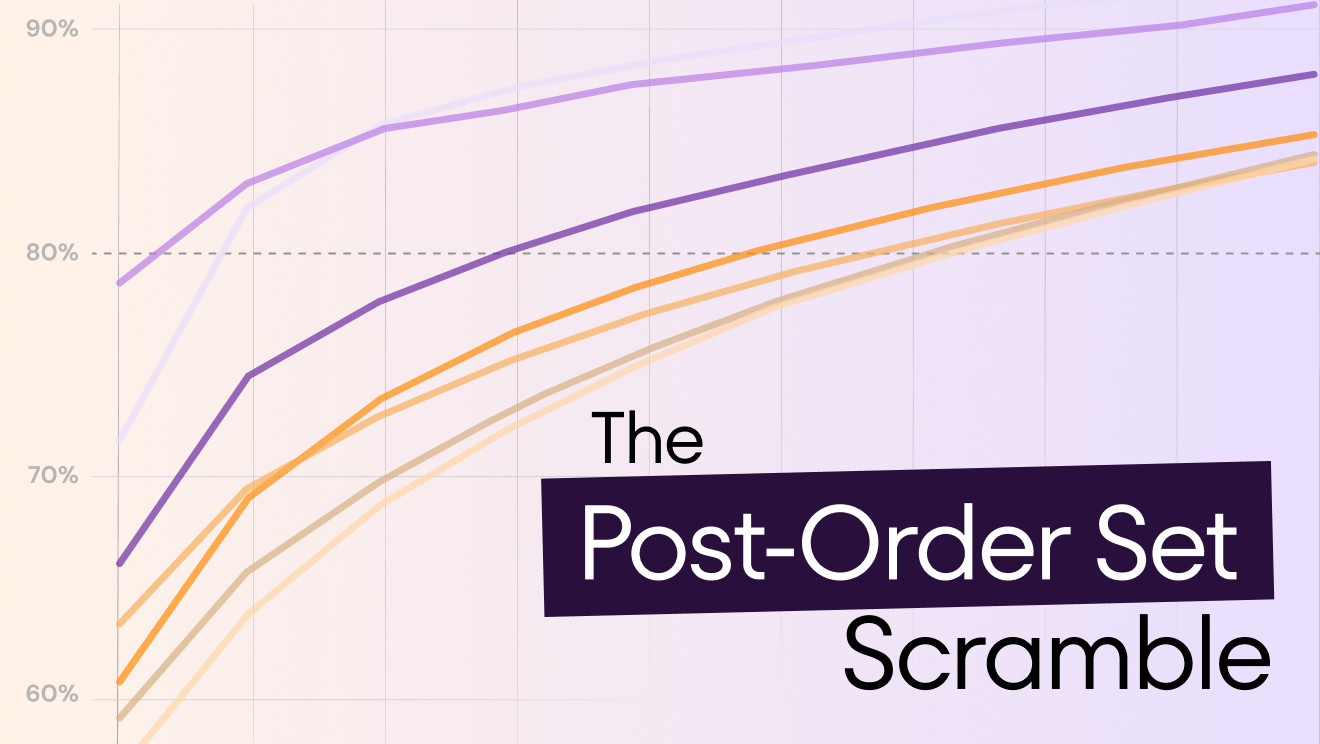Blog
Medicaid cuts and EHR chaos
With large Medicaid cuts on the horizon, healthcare systems face pressure to do more with less. This challenge is compounded by the explosion of medical knowledge and electronic health records (EHR) content that contributes to a staggering $265 billion problem in clinical variation


Medicaid cuts and EHR chaos
With large Medicaid cuts on the horizon, healthcare systems face pressure to do more with less. This challenge is compounded by the explosion of medical knowledge and electronic health records (EHR) content that contributes to a staggering $265 billion problem in clinical variation.
Reduced reimbursements often mean cuts—less operational support staff to monitor the growing EHR complexity and fewer clinicians to handle the same patient volumes. Today, healthcare organizations manage nearly 400 alerts, 700 order sets, and over 2,000 documentation templates on average, creating a dangerous feedback loop when unmonitored.
As the belt tightens, remaining staff face increased pressure to accomplish their outstanding responsibilities, but with less IT, informatics, and clinical support. Complex Medicaid documentation requirements—enforced through additional templates and validation rules—compound the problem. When resources are stretched thin, inefficient EHR monitoring processes become an increasing threat to provider burnout and, ultimately, patient safety.
The staggering scale of digital clutter
Our recent webinar with Temple Health's ACMIO, Dr. Tatyan Clarke, revealed the true scope beyond financial pressures. Dr. Clarke noted that with 599 active alerts and 577 order sets, the challenge isn't just alert fatigue—it's an entire ecosystem of clinical decision support tools that have become barriers to optimal treatment.
This EHR content explosion buries the "right clinical choice" under layers of digital complexity, making it harder for stretched staff to deliver efficient, quality care.
When and where digital burden peaks
Phrase Health's first Cranky Index Report, which analyzed over 5.5 million clinician comments across 65+ hospitals, reveals when and where EHR frustration peaks:
- Midweek meltdowns: Frustration climbs throughout the week, peaking Tuesday and Thursday, as clinicians navigate complex order sets, redundant documentation templates, and poorly designed validation messages.
- Day shift struggles: Daytime clinicians express 13% more frustration than night shift colleagues, battling alert overload plus the cumulative burden of clicking through poorly designed order sets and hunting for the right documentation template among thousands of options.
- Specialty Disparities: Laboratory medicine professionals show frustration rates at 3.70%—nearly 20 times higher than pediatricians —reflecting how different specialties struggle with EHR content that isn’t designed for their workflows.
Nurses report higher frustration rates than physicians— a troubling finding given widespread nursing shortages and burnout concerns. They're navigating order sets requiring unnecessary clicks, documentation templates that don't match workflows, and validation messages that add burden without value.
One departing nurse's comment captures the emotion:
"For f%cking sake. Today is my last day as a nurse and these notifications are the reason why."
The problem isn't just alerts—it's the entire ecosystem of clinical decision support tools and their relevant EHR-based workflows that make the "right clinical choice" harder instead of easier.
A data-driven path forward: rethinking clinical decision support
The solution isn't eliminating clinical decision support—it's fundamentally rethinking how it's designed and governed. Dr. Clarke emphasizes, "Good design is an act of empathy." The goal should be making the right clinical choice the easy choice.
- Content governance revolution: leading organizations like Temple Health implement cross-functional governance structures prioritizing both clinical safety and user experience. Their approach treats every piece of EHR content like a billboard with a five-word headline—clear, actionable, and purposeful.
- The art of saying no: Temple Health's success comes from giving people what they need instead of what they ask for. This prevents systems from becoming cluttered with redundant content that adds burden without value.
- Smart informatics solutions: Phrase Health's platform analyzes how clinical decision support content actually performs in real-world settings, using data to identify and address root causes of content failures.
The stakes have never been higher
Healthcare's digital future depends on getting this balance right. With Medicaid cuts potentially reducing resources while maintaining patient care demands, optimizing EHR processes that improve effectiveness while increasing efficiency become not just a quality improvement initiative—it's a survival strategy.
The data shows exactly where to start: targeting specialties and staff roles based on data insights. For healthcare leaders navigating an increasingly challenging landscape, smart content governance offers a path to doing more with less while protecting clinician well-being.
The goal is ensuring every piece of EHR content truly serves patient safety and clinical efficiency rather than contributing to the $265 billion problem of clinical variation and burnout.
This analysis is based on the Cranky Index Report by Phrase Health and insights from the webinar "Reducing Variation: Strategies to Address Clinical Decision Support Burden" featuring Dr. Tatyan Clarke, ACMIO of Temple Health and Dr. Marc Tobias, CEO and founder of Phrase Health.
You can read the full Phrase Cranky Index report here.
Watch the recorded webinar with Temple Health on AMIA’s website.
With large Medicaid cuts on the horizon, healthcare systems face pressure to do more with less. This challenge is compounded by the explosion of medical knowledge and electronic health records (EHR) content that contributes to a staggering $265 billion problem in clinical variation

Written by
The Phrase Health Team
Jul 10, 2025
Written by
The Phrase Health Team
Jul 10, 2025
With large Medicaid cuts on the horizon, healthcare systems face pressure to do more with less. This challenge is compounded by the explosion of medical knowledge and electronic health records (EHR) content that contributes to a staggering $265 billion problem in clinical variation.
Reduced reimbursements often mean cuts—less operational support staff to monitor the growing EHR complexity and fewer clinicians to handle the same patient volumes. Today, healthcare organizations manage nearly 400 alerts, 700 order sets, and over 2,000 documentation templates on average, creating a dangerous feedback loop when unmonitored.
As the belt tightens, remaining staff face increased pressure to accomplish their outstanding responsibilities, but with less IT, informatics, and clinical support. Complex Medicaid documentation requirements—enforced through additional templates and validation rules—compound the problem. When resources are stretched thin, inefficient EHR monitoring processes become an increasing threat to provider burnout and, ultimately, patient safety.
The staggering scale of digital clutter
Our recent webinar with Temple Health's ACMIO, Dr. Tatyan Clarke, revealed the true scope beyond financial pressures. Dr. Clarke noted that with 599 active alerts and 577 order sets, the challenge isn't just alert fatigue—it's an entire ecosystem of clinical decision support tools that have become barriers to optimal treatment.
This EHR content explosion buries the "right clinical choice" under layers of digital complexity, making it harder for stretched staff to deliver efficient, quality care.
When and where digital burden peaks
Phrase Health's first Cranky Index Report, which analyzed over 5.5 million clinician comments across 65+ hospitals, reveals when and where EHR frustration peaks:
- Midweek meltdowns: Frustration climbs throughout the week, peaking Tuesday and Thursday, as clinicians navigate complex order sets, redundant documentation templates, and poorly designed validation messages.
- Day shift struggles: Daytime clinicians express 13% more frustration than night shift colleagues, battling alert overload plus the cumulative burden of clicking through poorly designed order sets and hunting for the right documentation template among thousands of options.
- Specialty Disparities: Laboratory medicine professionals show frustration rates at 3.70%—nearly 20 times higher than pediatricians —reflecting how different specialties struggle with EHR content that isn’t designed for their workflows.
Nurses report higher frustration rates than physicians— a troubling finding given widespread nursing shortages and burnout concerns. They're navigating order sets requiring unnecessary clicks, documentation templates that don't match workflows, and validation messages that add burden without value.
One departing nurse's comment captures the emotion:
"For f%cking sake. Today is my last day as a nurse and these notifications are the reason why."
The problem isn't just alerts—it's the entire ecosystem of clinical decision support tools and their relevant EHR-based workflows that make the "right clinical choice" harder instead of easier.
A data-driven path forward: rethinking clinical decision support
The solution isn't eliminating clinical decision support—it's fundamentally rethinking how it's designed and governed. Dr. Clarke emphasizes, "Good design is an act of empathy." The goal should be making the right clinical choice the easy choice.
- Content governance revolution: leading organizations like Temple Health implement cross-functional governance structures prioritizing both clinical safety and user experience. Their approach treats every piece of EHR content like a billboard with a five-word headline—clear, actionable, and purposeful.
- The art of saying no: Temple Health's success comes from giving people what they need instead of what they ask for. This prevents systems from becoming cluttered with redundant content that adds burden without value.
- Smart informatics solutions: Phrase Health's platform analyzes how clinical decision support content actually performs in real-world settings, using data to identify and address root causes of content failures.
The stakes have never been higher
Healthcare's digital future depends on getting this balance right. With Medicaid cuts potentially reducing resources while maintaining patient care demands, optimizing EHR processes that improve effectiveness while increasing efficiency become not just a quality improvement initiative—it's a survival strategy.
The data shows exactly where to start: targeting specialties and staff roles based on data insights. For healthcare leaders navigating an increasingly challenging landscape, smart content governance offers a path to doing more with less while protecting clinician well-being.
The goal is ensuring every piece of EHR content truly serves patient safety and clinical efficiency rather than contributing to the $265 billion problem of clinical variation and burnout.
This analysis is based on the Cranky Index Report by Phrase Health and insights from the webinar "Reducing Variation: Strategies to Address Clinical Decision Support Burden" featuring Dr. Tatyan Clarke, ACMIO of Temple Health and Dr. Marc Tobias, CEO and founder of Phrase Health.
You can read the full Phrase Cranky Index report here.
Watch the recorded webinar with Temple Health on AMIA’s website.

.svg)
.svg)


